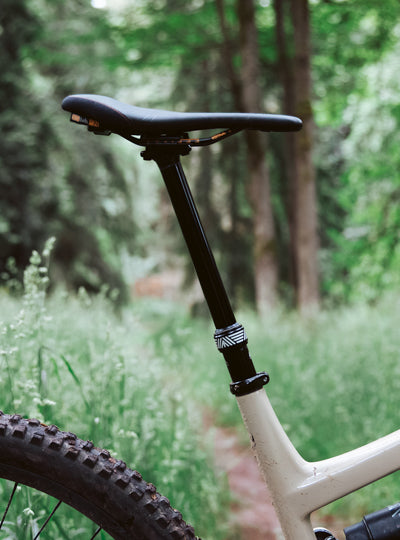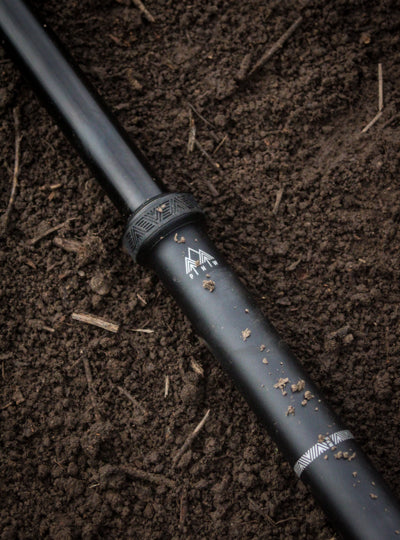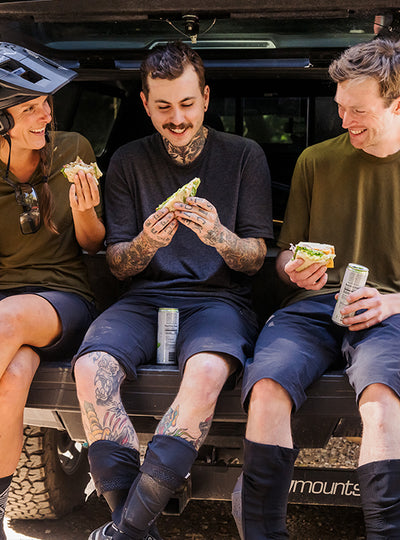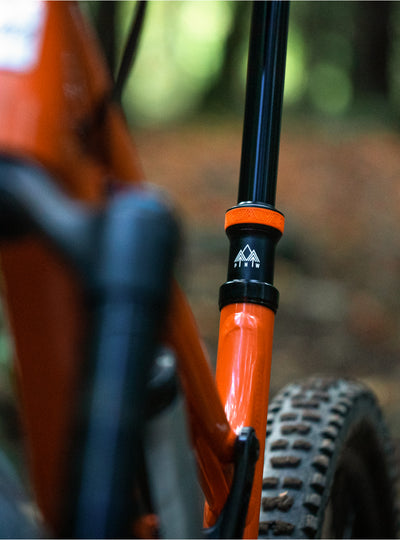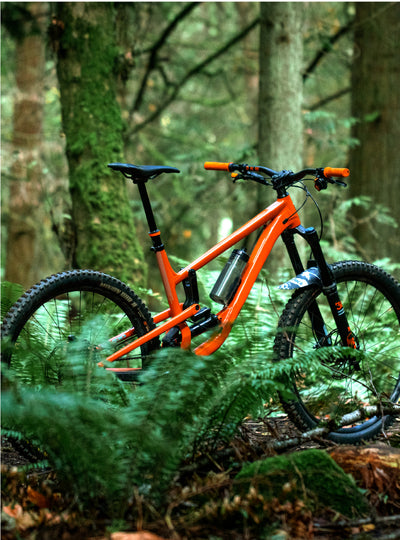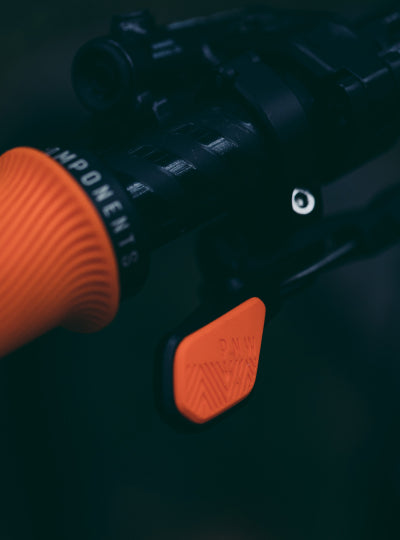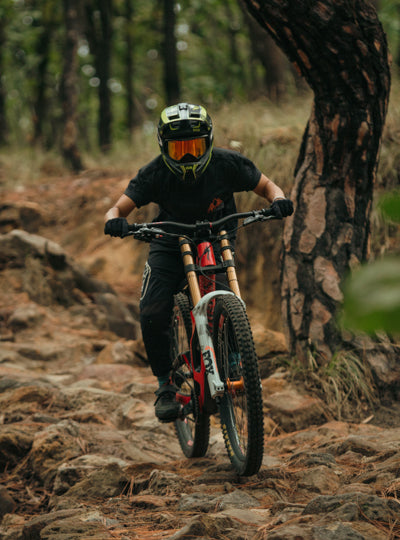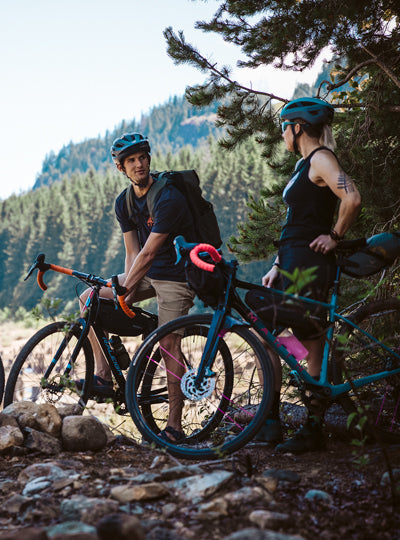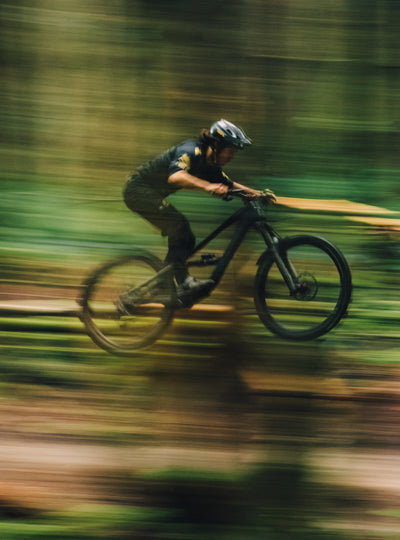You finally pulled that old hardtail out of the shed, dusted off the cobwebs, pumped up the tires, and went for a spin. But the ride was, well, less than ideal. We are big proponents of upgrading here, and DIY doesn’t just need to be for redoing your backyard into the perfect Covid sanctuary. With a few new parts, and maybe a bit of help from a local shop, you can get that ‘mature’ bike ready for some new trails. Follow along with the advice of Seth from Berm Peak and then check out our recommendations below.
Dropper Post:
Call us biased, but there’s a reason we started our component company by designing dropper posts. We believe, and a lot of the industry agrees, that a dropper post can take an old bike and bring it into the modern bike world. The ability to drop your seat for riding steeps and modern trails makes a huge amount of difference. And, for under $200 you can change the entire riding experience.
For a lot of older hardtails, you’ll need to get an externally routed dropper post because those bikes were designed before droppers swept the cycling world. To find the right dropper you’ll need to know the diameter of your seat post. You can also take a look at our other article, How to Choose a Dropper Post, for more info on what post is right for your bike.
Drivetrain:
Another great way to modernize an old bike, drop weight, and smooth out the ride is to upgrade your drivetrain. Changing from a more traditional 2x drivetrain to a 1x is an easy way to maximize the quality of your riding. There are a ton of perks to this upgrade. First off, dropping down to 1x seriously cuts weight off your bike. Then there is just the simplicity of only dealing with one set of gears to index and maintain. It also eliminates one element of shifting and drops weight in your cockpit as well. Basically, 1x drivetrains simplify your setup while improving the quality of your ride and it’s a pretty easy transition to make.
This upgrade is one of the pricier options, but by just adding a 1x and a dropper post you have already modernized your bike to be hitting up local trails with any crew.
New Chain:
This is a no brainer, especially if you’re replacing the drivetrain. If a bike has been sitting in the back of your shed for a few years, it’s likely that the chain is rusted, dirty, and worn. Save yourself the headache of cleaning off the rust only to have it break on you after a ride or two and replace it with a new one.Tires:
Although wheels aren’t always a necessary upgrade, new tires definitely can help bring that old bike back to life. What tires are right for you depends on the kind of riding you’ll be doing. Is this a bike you’ll mostly use for commuting or riding around the neighborhood with the kiddos? Then you’ll want something thinner, but durable with a bit less tread.
Or are you jumping back into the world of mountain biking with this old whip? Weight, durability, and tread will be your friend here. Getting a fresh tubeless setup can also drop weight and create ease of riding. Tubeless allows you to ride with lower pressure tires that increase traction and have far fewer punctures to deal with on your ride.
Converting to tubeless does not require a new set of wheels. A lot of brands (Stan’s No Tubes for one) have kits that allow you to convert regular rims on standard mountain bike wheels to a tubeless setup.
Grips:
Kind of like a chain, these are a given when upgrading your bike. The rubber or silicon on old grips does have a shelf life and the dirt and grime can build up over time. Treat yourself and grab a new pair. A modern pair of grips, like our Loam Grips, can also make your riding much more enjoyable. The right grip can decrease arm fatigue and blisters that an old grip will inevitably create.
Handlebar and Stem:
The trick here is to go wide with the bars and short with the stem. The industry has been heading in this direction for a while and it’s not just because it looks rad. By wide bars, we mean over 720mm and for the shorter stem well under 70mm (we suggest 40mm or 50mm). As an example, the stock width of our Range Handlebar is 780mm and our Range Stem comes in both 40mm and 50mm.
Why? The wide bars have become popular because they increase stability and control while riding. The shorter stem is necessary to keep your body in the correct position with those wider bars, and it also keeps your weight well balanced between the wheels.
Pedals:
Other than grips, these are the main things that connect you to your bike. The pedals are where your power and control stem from. They’re important. If you have the original plastic pedals that came with your bike an upgrade is a must. You can also spend as much or as little as you want to on pedals. We recommend deciding if you want to have composite (plastic) or an alloy (metal) pedals. You can get a quality version of both that have sealed bearings and traction pins if you’re opting for flats.
If you want to make the leap into clipping your feet into the pedals--aka ‘clipless’--that is an option as well. Clipless pedals are great for getting as much power as possible out of each pedal stroke. A lot of riders going long distances and focused on speed opt for these. There is a bit of a learning curve for riding clipless, so be prepared if you choose this route.
Get to the Shop:
When all is said and done, we strongly suggest taking your old ride into your local bike shop to see what they would recommend changing or upgrading. The world of cycling is constantly evolving and suspension components, brakes, and wheels are all vastly different from what they were just five years ago. They’re also more confusing and complex. Along with technical changes to the inner mechanics, new sizing variations have also been released which could limit what your bike is compatible with. Seeking the help of your favorite mechanic to tune your suspension, bleed your brakes, true your wheels, or just flat out replace them will be the quickest way to get riding.Worth It?
There’s no hiding the fact that bikes are expensive. We believe the more people are able to get out and ride the better for the bike industry and our communities. The loam doesn’t care if you’re on a brand new carbon, full-suspension bike, or an upgraded ten-year-old hardtail. Upgrading an old bike is a great way to get on the trail or to help one of your mates get into riding.
As always, if you have any questions about this article or about any of our products, feel free to reach out to our team at info@pnwcomponents.




